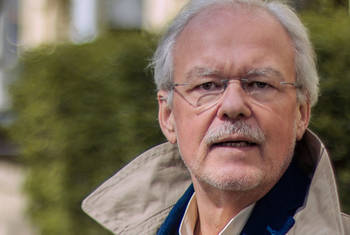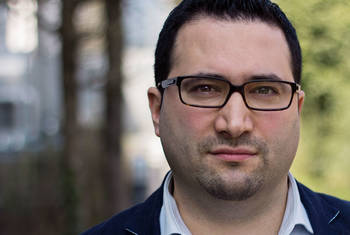Peter H. Seeberger How Can Vaccine Design Be Modified by the Use of Synthetic Sugars?
Peter H. Seeberger is Director at the Max-Planck Institute for Colloids and Interfaces in Potsdam and Professor at the Freie Universität in Berlin. In 2013, he was elected to the Berlin-Brandenburg Academy of Sciences. His research on the chemistry and biology of carbohydrates, carbohydrate vaccine development and continuous flow synthesis of drug substances has been widely published and has been recognized with more than twenty-five international awards. Six successful companies have been spun out of the research conducted in the Seeberger laboratory. The Professor is editor-in-chief of the open-access Beilstein Journal of Organic Chemistry. His work on neglected diseases has influenced his philanthropic commitment and he is a co-founder of the Tesfa-Ilg “Hope for Africa” Foundation.
Area of Research
Glycobiology
since 2009
Director
Max Planck Institute of Colloids and Interfaces
since 2009
Professor
Free University of Berlin (Freie Universität Berlin)
2003-2014
Affiliate Professor
Sanford-Burnham Medical Research Institute, La Jolla (USA)
2003-2009
Professor
Swiss Federal Institute of Technology
- Beilstein Journal of Organic Chemistry
- Berlin-Brandenburg Academy of Sciences
- Honorary Lifetime Member, Israel Chemical Society
Prizes
- Humanity in Science Award (2015)
- C. S. Hamilton Award for Organic Chemistry, University of Nebraska (2013)
- Whistler Award, International Carbohydrate Society (2012)
- Claude S. Hudson Award in Carbohydrate Chemistry, American Chemical Society (ACS) (2009)
- Körber European Science Prize (2007)
- Havinga Medal, Leiden University (2007)
- Yoshimasa Hirata Gold Medal, Nagoya University (2007)
- Arthur C. Cope Young Scholar Award (ACS) (2003)
- Horace B. Isbell Award (ACS Carbohydrate Division) (2003)
- ERC Advanced Grant (2008)
 © Maximilian Dörrbecker
© Maximilian Dörrbecker
Max Planck Society
"The Max Planck Society is Germany's most successful research organization. Since its establishment in 1948, no fewer than 18 Nobel laureates have emerged from the ranks of its scientists, putting it on a par with the best and most prestigious research institutions worldwide. The more than 15,000 publications each year in internationally renowned scientific journals are proof of the outstanding research work conducted at Max Planck Institutes – and many of those articles are among the most-cited publications in the relevant field." (Source)
Institute
Max Planck Institute of Colloids and Interfaces
The Max Planck Institute of Colloids and Interfaces was founded in 1992. Research in Colloid and Interface Science is widely covered by the following Departments: Biomaterials, Biomolecular Systems, Colloid Chemistry and Theory & Bio-Systems, the Max Planck Research Group Mechano(bio)chemistry and the Emeritus Group (Interfaces). Current research topics are polymeric films, membranes, microcapsules, organic and inorganic nanostructures, biomineralization, nano- and microreactors, molecular motors and filaments as well as chemistry and biology of carbohydrates. Biomimetic research is at the core of the Institute’s activity. Common goal is to learn from nature how to build hierarchical materials or active systems with new functionalities, with adaptive, self-healing or self-assembling properties. (Source)
Map
Streptococcus pneumoniae kills millions of people worldwide. For the subgroup serotype 8, prevalent in the United States and Western Europe, there is no vaccine to date. In this video, PETER H. SEEBERGER explains the approach of his research group to create a synthetic sugar vaccine against this bacterial infection that works in mice. They relied on synthetic chemistry to assemble sugar chains from monomers; the researchers then connected them to a carrier protein and tested whether they were immunogenic – causing an immune response in living organisms – and whether they were protective. Thus they succeeded in creating the vaccine. Their results have inspired further work in the area in the hope of finding a vaccine for humans. On a fundamental level, the researchers also found that the way in which sugars are presented to the immune system matters with respect to immunogenicity and protection. This has strong implications for future vaccine design.
LT Video Publication DOI: https://doi.org/10.21036/LTPUB10402
A Semisynthetic Streptococcus Pneumoniae Serotype 8 Glycoconjugate Vaccine
- Benjamin Schumann, Heung Sik Hahm, Sharavathi G. Parameswarappa, Katrin Reppe, Annette Wahlbrink, Subramanian Govindan, Paulina Kaplonek, Liise-anne Pirofski, Martin Witzenrath, Chakkumkal Anish and Peter H. Seeberger
- Science Translational Medicine
- Published in 2017
Chemical Assembly Systems: Layered Control for Divergent, Continuous, Multistep Syntheses of Active Pharmaceutical Ingredients
- Diego Ghislieri, Kerry Gilmore and Peter H. Seeberger
- Angewandte Chemie International Edition
- Published in 2015









